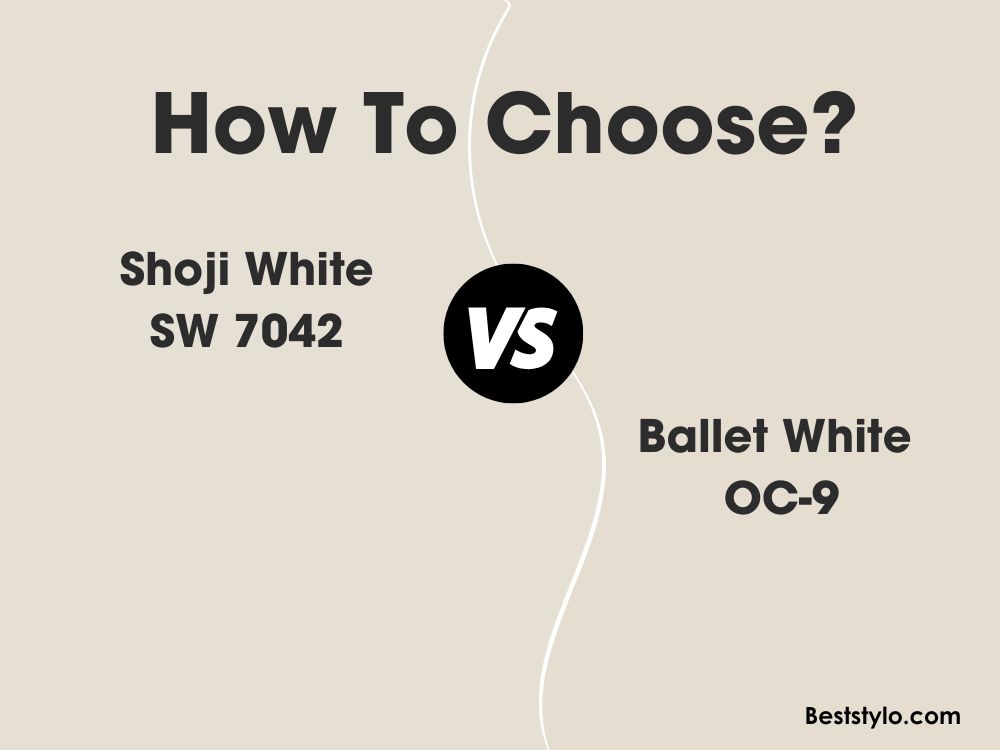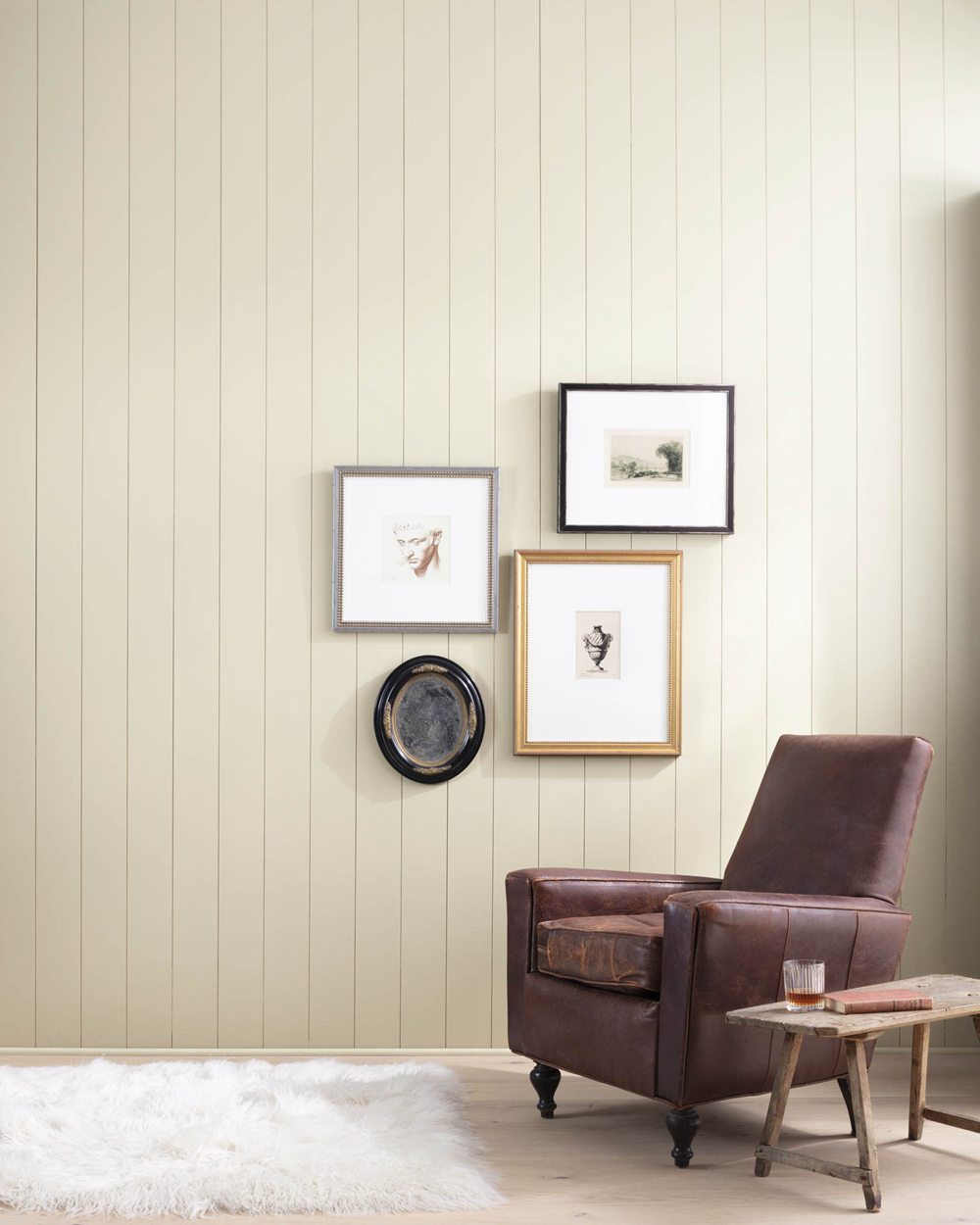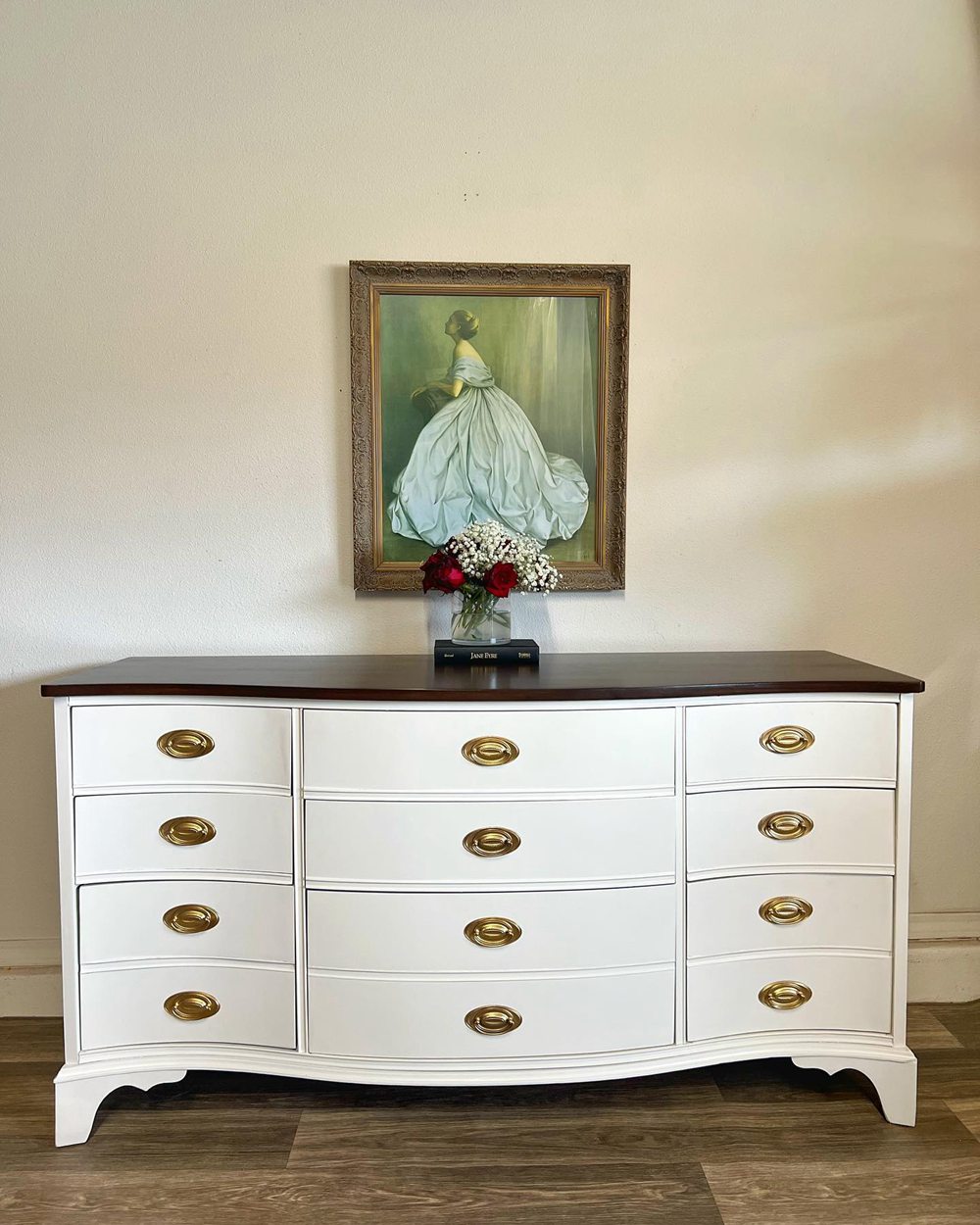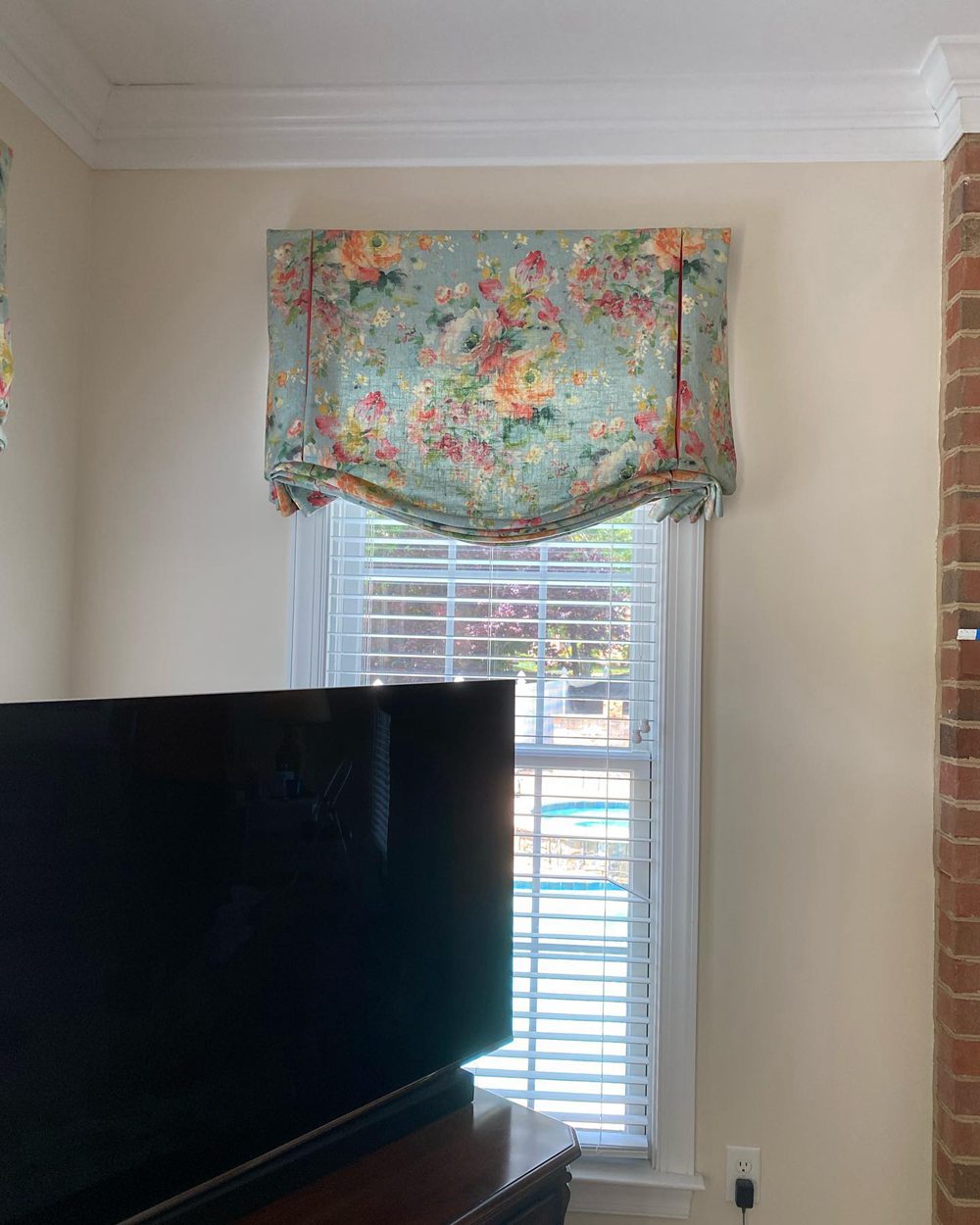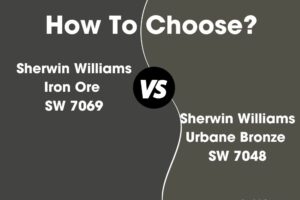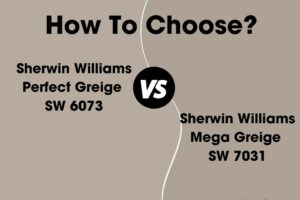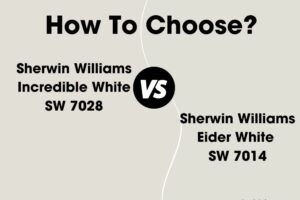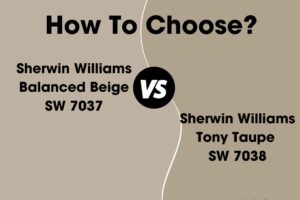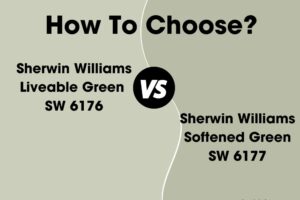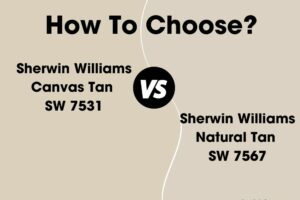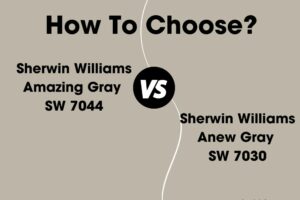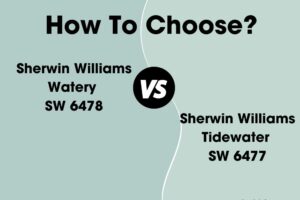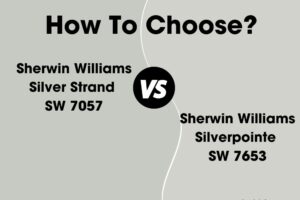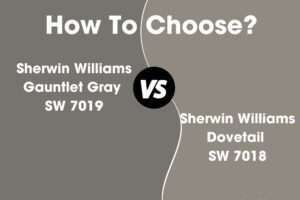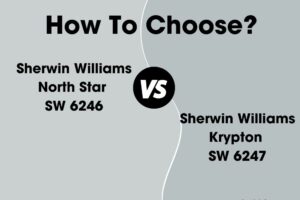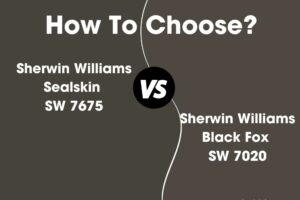With so many gorgeous whites and off-whites on the market, picking the ideal one for your home can be challenging. Two of the most popular are Benjamin Moore’s Ballet White and Sherwin-Williams’ Shoji White. But what really distinguishes these beautiful, neutral paint colors?
In this guide, we’ll analyze Ballet White and Shoji White in depth, comparing undertones, finishes, light reflectance, real photos, and ideal room uses. Read on to determine if Ballet White or Shoji White is the best bright white for your interior design.
Table of Contents
Key Differences Between Ballet White and Shoji White
Before diving into details, here is an overview of the main differences between Ballet White and Shoji White:
- Undertones – Ballet White has faint cool, Shoji White has hints of green
- Light Reflectance – Ballet White has an LRV of 71.97, Shoji White has an LRV of 74
- Look – Ballet White is cleaner and brighter, Shoji White is crisper and cooler
- Use – Ballet White for modern styles, Shoji White suits contemporary spaces
- Rooms – Ballet White recommended for bathrooms, Shoji White ideal for kitchens
Now let’s explore Ballet White and Shoji White paint colors more closely.
Benjamin Moore Ballet White OC-9
With its clean, bright white appearance, Ballet White OC-9 immediately livens up any space. This versatile neutral provides an airy backdrop.
Here are some key details about Benjamin Moore’s Ballet White paint color:
- LRV: 71.97
- Undertones: Very subtle cool
- Sheen: Flat, eggshell, satin, semi-gloss
- Rooms: Whole home, especially bathrooms and kitchens
- Pairings: Grays, blues, greens
Ballet White is a gorgeous true white with the faintest whisper of blue-green. In certain lighting, it can read as an extremely subtle cool tone. Overall it remains close to a perfect white.
With a 71.97 light reflectance value, Ballet White maximizes brightness. This makes it ideal for any space needing ample illumination. The barely perceptible coolness prevents it from feeling sterile.
Ballet White’s clean, optimistic color immediately awakens rooms with its renewed look. This versatile neutral coordinates as well with cool accents as warm ones. Especially popular combinations include:
- Benjamin Moore Horizon
- Benjamin Moore October Mist
- Benjamin Moore Hale Navy
- Benjamin Moore Boston Brick
Use Ballet White to create serene, airy spaces with an open, minimalist feel. This relaxed backdrop helps rooms feel uncluttered and tranquil. It works in any area but really excels in these:
- Bathrooms
- Kitchens
- Ceilings
- Trim/moldings
- Small spaces
Sherwin-Williams Shoji White
With its bright white appearance, Shoji White SW 7042 offers a clean, refreshed look. This versatile neutral provides an airy backdrop.
Here are some key details about Sherwin-Williams’ Shoji White paint color:
- LRV: 74
- Undertones: Subtle green
- Sheen: Flat, eggshell, satin, semi-gloss
- Rooms: Whole home, especially kitchens and baths
- Pairings: Grays, blues, greens
Shoji White is a crisp white with the faintest hint of green. In certain lights, it can read as an almost imperceptible green-gray. The overall effect is a color that straddles the line between true white and white with cool undertones.
With an 74 light reflectance value, Shoji White maximizes brightness. This makes it ideal for spaces that need ample illumination. The subtle green influence prevents it from feeling sterile.
Shoji White’s high-energy color immediately awakens and refreshes rooms with its clean, renewed look. This versatile neutral pairs beautifully with both cool and warm accents. Especially popular combinations include:
- Sherwin-Williams Repose Gray
- Sherwin-Williams Rainwashed
- Sherwin-Williams Naval
- Sherwin-Williams Peppercorn
Use Shoji White to create crisp, contemporary spaces with an open and airy feel. This minimalist neutral helps rooms feel uncluttered and tranquil. It works in any area but really excels in these:
- Kitchens
- Bathrooms
- Ceilings
- Trim/molding
- Hallways
Comparing Ballet White and Shoji White
Now that we’ve looked at Ballet White and Shoji White individually, let’s directly compare the two paint colors:
Light Reflectance
With LRVs of 71.97 and 74 respectively, Ballet White reflects slightly more light than Shoji White. However, both offer maximum brightness for any space.
Undertones
Here is where the main difference lies. Ballet White has the faintest whisper of cool blue-green. Shoji White has a hint of green-gray.
Ballet White’s barely perceptible coolness gives it a true white look. Shoji White’s subtle green adds crispness.
Uses
Thanks to its true white tone, Ballet White works well throughout homes for a cohesive look.
Shoji White’s faint coolness makes it ideal for kitchens, baths, and trim where you want clean, bright illumination. Its tone remains flexible across spaces though.
Aesthetic
Ballet White’s near imperceptible undertone gives it an airy, modern vibe. This makes it ideally suited to contemporary, minimalist spaces.
Shoji White’s subtle green-gray undertone provides a crisper, brighter aesthetic. This makes it perfect for modern designs.
Ballet White vs Shoji White Comparison Chart
Here is an overview of some key differences between Ballet White and Shoji White:
| Paint Color | Ballet White OC-9 | Shoji White SW 7042 |
|---|---|---|
| LRV | 71.97 | 74 |
| Undertones | Hint of cool blue-green | Green-gray |
| Use | Ceilings, trim, small spaces | Kitchens, baths |
| Aesthetic | Modern, minimalist | Contemporary, modern |
| Sheen | All sheens | All sheens |
Real Room Photos – Ballet White vs Shoji White
To better visualize the variations between Ballet White and Shoji White, let’s look at real room photos showcasing the paint colors:
Ballet White
With its clean, bright white appearance, Ballet White OC-9 immediately livens up any space. This versatile neutral provides an airy backdrop.
Here are some key details about Benjamin Moore’s Ballet White paint color:
- LRV: 71.97
- Undertones: Very subtle cool
- Sheen: Flat, eggshell, satin, semi-gloss
- Rooms: Whole home, especially bathrooms and kitchens
- Pairings: Grays, blues, greens
Ballet White is a gorgeous true white with the faintest whisper of blue-green. In certain lighting, it can read as an extremely subtle cool tone. Overall it remains close to a perfect white.
With a 71.97 light reflectance value, Ballet White maximizes brightness. This makes it ideal for any space needing ample illumination. The barely perceptible coolness prevents it from feeling sterile.
Ballet White’s clean, optimistic color immediately awakens rooms with its renewed look. This versatile neutral coordinates as well with cool accents as warm ones. Especially popular combinations include:
- Benjamin Moore Horizon
- Benjamin Moore October Mist
- Benjamin Moore Hale Navy
- Benjamin Moore Boston Brick
Use Ballet White to create serene, airy spaces with an open, minimalist feel. This relaxed backdrop helps rooms feel uncluttered and tranquil. It works in any area but really excels in these:
- Bathrooms
- Kitchens
- Ceilings
- Trim/moldings
- Small spaces
Shoji White
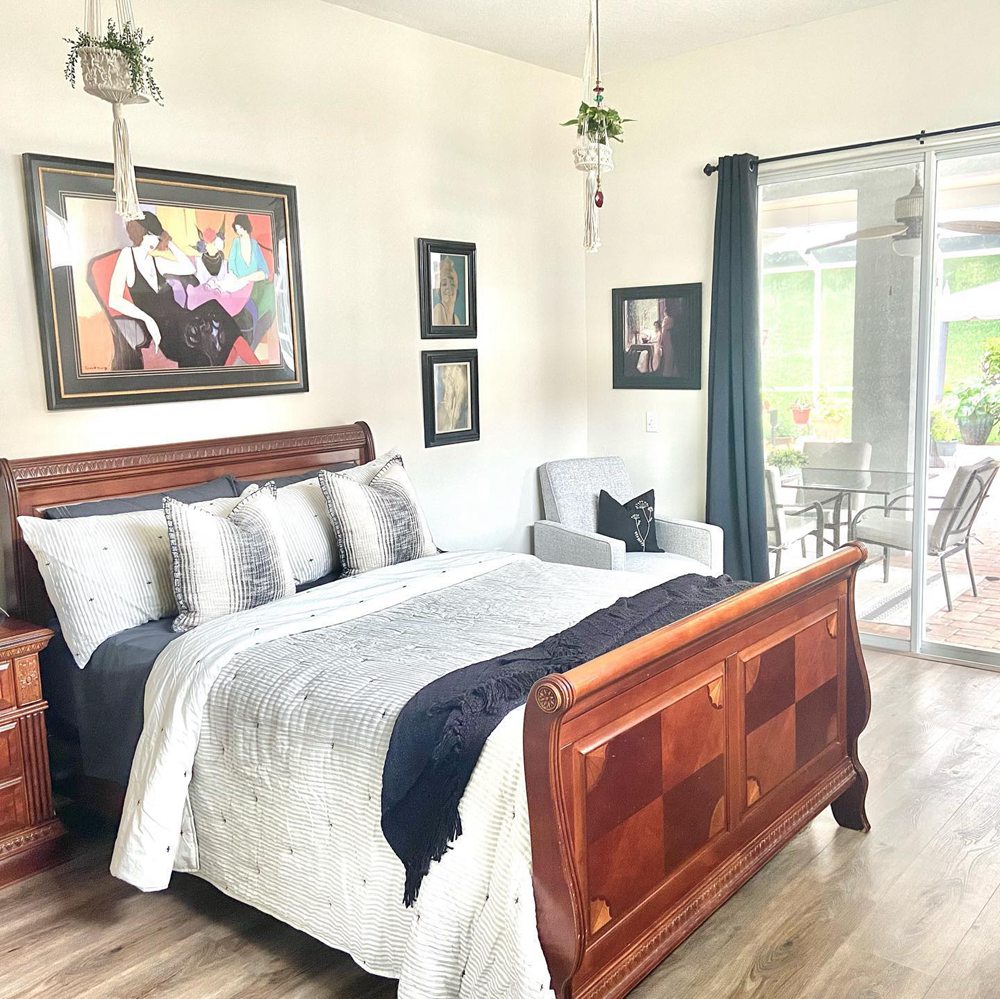
With its bright white appearance, Shoji White SW 7042 offers a clean, refreshed look. This versatile neutral provides an airy backdrop.
Here are some key details about Sherwin-Williams’ Shoji White paint color:
- LRV: 74
- Undertones: Subtle green
- Sheen: Flat, eggshell, satin, semi-gloss
- Rooms: Whole home, especially kitchens and baths
- Pairings: Grays, blues, greens
Shoji White is a crisp white with the faintest hint of green. In certain lights, it can read as an almost imperceptible green-gray. The overall effect is a color that straddles the line between true white and white with cool undertones.
With an 74 light reflectance value, Shoji White maximizes brightness. This makes it ideal for spaces that need ample illumination. The subtle green influence prevents it from feeling sterile.
Shoji White’s high-energy color immediately awakens and refreshes rooms with its clean, renewed look. This versatile neutral pairs beautifully with both cool and warm accents. Especially popular combinations include:
- Sherwin-Williams Repose Gray
- Sherwin-Williams Rainwashed
- Sherwin-Williams Naval
- Sherwin-Williams Peppercorn
Use Shoji White to create crisp, contemporary spaces with an open and airy feel. This minimalist neutral helps rooms feel uncluttered and tranquil. It works in any area but really excels in these:
- Kitchens
- Bathrooms
- Ceilings
- Trim/molding
- Hallways
In the photos, Ballet White appears slightly cleaner and brighter, while Shoji White looks crisper and cooler. But lighting affects their look – they can seem quite similar in some conditions.
Should I Choose Ballet White or Shoji White?
So how do you decide between Ballet White vs Shoji White for your home? Here are a few tips:
Choose Ballet White if you want:
- A true bright white with hardly any undertones
- Maximum light reflection
- A versatile foundational color
- A clean, modern minimalist look
Choose Shoji White if you want:
- A hint of cool green-gray undertone
- Crisp, contemporary style
- Lots of brightness for kitchens and baths
- A very subtle cool tint
It’s best to get samples of both paint colors. Paint large sections on your walls and view them at different times of day and lighting. This will give you the clearest sense of which hue you prefer in your unique environment.
While quite similar, Ballet White and Shoji White each have subtle differences. Choose the one that best matches your goals and decor.
Ideal Room Combinations
Here are some rooms that are particularly well-suited to Ballet White and Shoji White:
Ballet White OC-9
- Bathrooms
- Kitchens
- Ceilings
- Hallways
- Doors/trim
- Small spaces
Shoji White SW 7042
- Kitchens
- Bathrooms
- Ceilings
- Cabinets
- Hallways
- Laundry rooms
With their bright whites and maximum light reflectance, Ballet White and Shoji White work beautifully throughout homes. But the above applications tend to perfectly complement each shade’s subtle strengths.
Decorating Ideas and Color Pairings
On their own, Ballet White and Shoji White create clean and fresh backdrops. Complement them with colors and textures for gorgeously designed rooms:
Ballet White Color Pairings
- Benjamin Moore Black Forest Green
- Benjamin Moore Horizon
- Benjamin Moore Hale Navy
- Benjamin Moore Modern History
- Marble, metal, glass
Shoji White Color Pairings
- Sherwin-Williams Repose Gray
- Sherwin-Williams Oceanside
- Sherwin-Williams Naval
- Sherwin-Williams Peppercorn
- Glossy flooring, chrome
Ballet White vs Shoji White: Which is Best for Your Home?
So which bright white is better for you, Ballet White or Shoji White? Consider your goals and style:
Choose Ballet White if you want:
- A true white with hardly any undertones
- Clean, modern, minimalist look
- Maximum light reflection
- Versatile, cohesive brightness
Choose Shoji White if you want:
- A hint of cool green-gray undertone
- Crisp, contemporary aesthetic
- Lots of light for kitchens and baths
- A very subtle tint
Ballet White offers true, flexible brightness. Shoji White provides airy cool crispness.
Test them in your lighting before finalizing a decision. Either will create a beautiful, enduring white backdrop.
Frequently Asked Questions
Still trying to decide between Ballet White and Shoji White? Here are answers to some commonly asked questions:
Which white reflects more light, Ballet White or Shoji White?
Ballet White has a slightly higher LRV at 71.97 than Shoji White at 74 light reflectance. But both offer maximum brightness.
What undertone does Ballet White have?
Ballet White has only the faintest whisper of cool blue-green undertones. Many would describe it as a true white.
Is Shoji White warm or cool?
Shoji White is a cool undertone white, with subtle hints of green-gray. However, its coolness is extremely faint.
Can you use Shoji White on ceilings?
Yes, Shoji White’s 74 LRV makes it suitable for ceilings. It reflects light well to prevent dinginess or shadows.
What colors complement Ballet White?
Ballet White pairs beautifully with any color scheme, from bold like Black Forest Green to neutrals like Edgecomb Gray.


